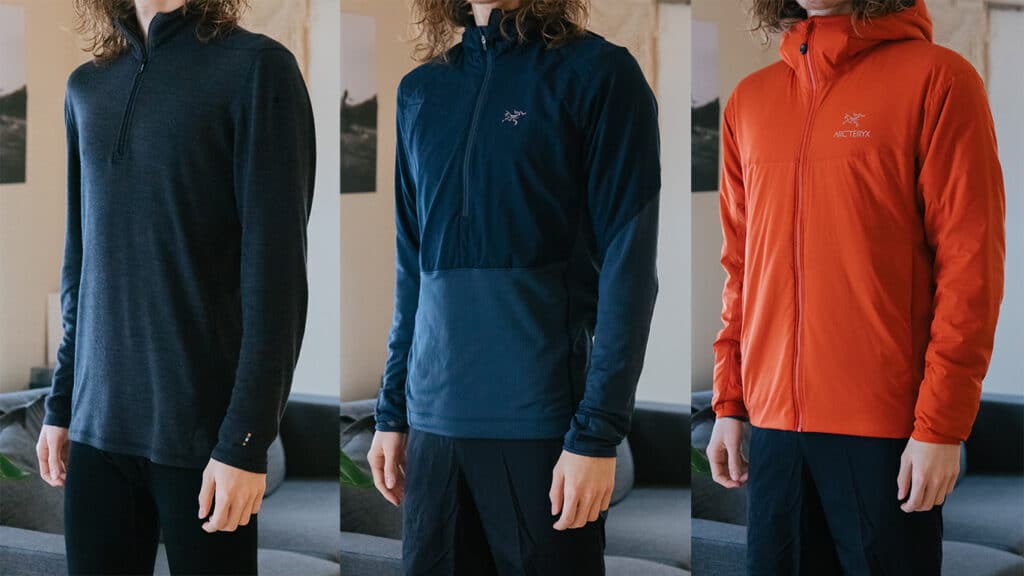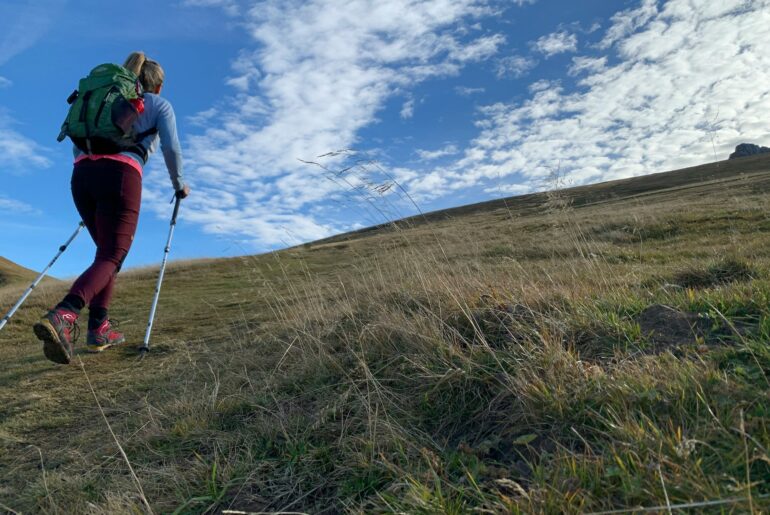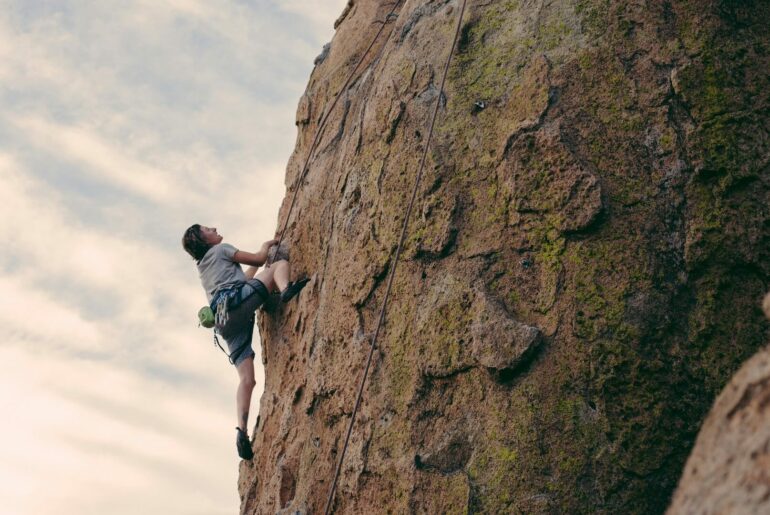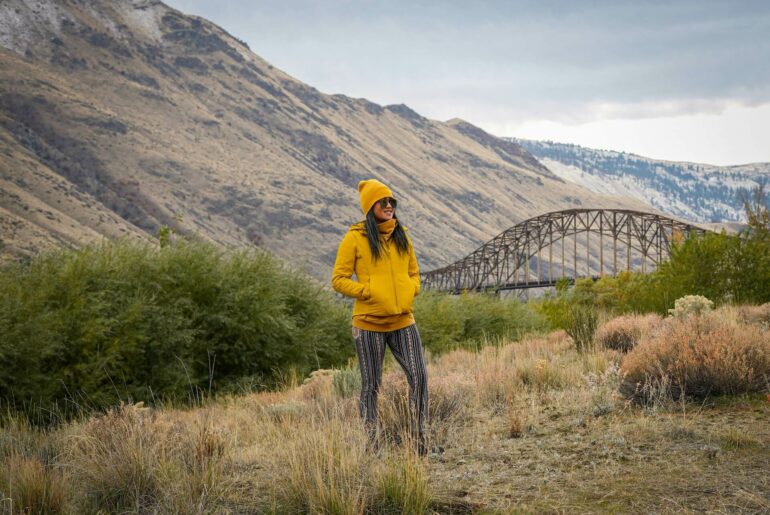The layering system, a proven and favoured choice among walkers, mountaineers, and climbers for decades, allows outdoor enthusiasts to stay warm, comfortable, and safe in the mountains by combining multiple performance layers. The saying “there’s no such thing as bad weather, just bad clothing” emphasizes the importance of proper outdoor attire. Understanding how to layer outdoor clothing is crucial for an enjoyable experience, especially in extreme conditions, as the wrong choices can lead to misery or even life-threatening situations.

The Primary Purpose of the Layering System
The primary goal of the layering system is to keep you dry, comfortable, and warm. Staying dry and warm is essential, especially in mountainous environments. It’s vital to grasp how and why we get cold to prevent the onset of hypothermia, a potentially life-threatening condition where body temperature falls below 35˚C.
Understanding the Factors Leading to Cold
Evaporative cooling, the natural process of moisture evaporating from the skin, is how our bodies cool down. However, in mountainous environments or during physical exertion, excessive cooling can occur. Wearing inappropriate clothing, like a cotton t-shirt next to the skin, can lead to rapid moisture absorption and evaporative cooling, increasing the risk of hypothermia in cold, wet, and windy conditions.
Modern Layering System: How to Layer Outdoor Clothing
Modern layering systems leverage the cooling power of evaporation to wick moisture away from the body, allowing airflow for effective cooling during intense activities. These systems dry quickly and provide insulation when stationary, ensuring warmth. Choosing the right layers involves considering factors like moisture management, conductive cooling, convective cooling, and wind chill.
The Perfect Setup: Outdoor Baselayers
Baselayers, the layer next to your skin, should be close-fitting to maximize the wicking effect and keep you dry. Whether short or long-sleeved, baselayers come in lightweight or heavyweight options, with synthetic and wool fabrics being the main choices. Synthetic baselayers are durable, dry quickly, and are suitable for high-output activities, while merino wool offers superior insulation and odor resistance, making it ideal for less-strenuous outdoor activities.
The Role of Midlayers
Midlayers insulate the body by trapping warm air. Fleece has traditionally been a popular midlayer choice, but windproof fleece, hard-face fleece, and softshell garments offer added protection against wind-chill. Balancing weather resistance and breathability is essential, depending on personal preferences and the intended activity.
Insulated Layer: Choosing the Right Insulating Layer
Insulating layers, filled with synthetic fibers or natural down, provide warmth and are crucial for unpredictable weather conditions. Down jackets are lightweight and packable but lose insulation when wet, making synthetic jackets a better choice for damp conditions.
Optional—Lightweight Windproof Layer
A lightweight, breathable, and wind-resistant jacket adds valuable protection against windchill without the bulk of a fully insulated layer. This layer, worn over a base or midlayer, offers excellent weather protection.
Outer Shell: Technical and Softshell Jackets
A technical outer shell, waterproof and breathable, is essential for keeping out the elements. Softshell jackets, though not completely waterproof, provide weather protection and higher breathability, making them suitable for less severe weather conditions.
Don’t Forget Your Bottom Half!
Layering principles apply equally to the lower body. Modern softshell trousers offer weather protection and quick-drying properties, while layering options are available for extreme cold or wet conditions.
In Conclusion
Understanding how to layer outdoor clothing is vital for safety, comfort, and enjoyment in the mountains. Avoiding cotton, considering underwear, layering for legs and hands, adjusting layers based on conditions and activity levels, and carrying insulating layers and waterproofs are key takeaways for a successful outdoor experience.



